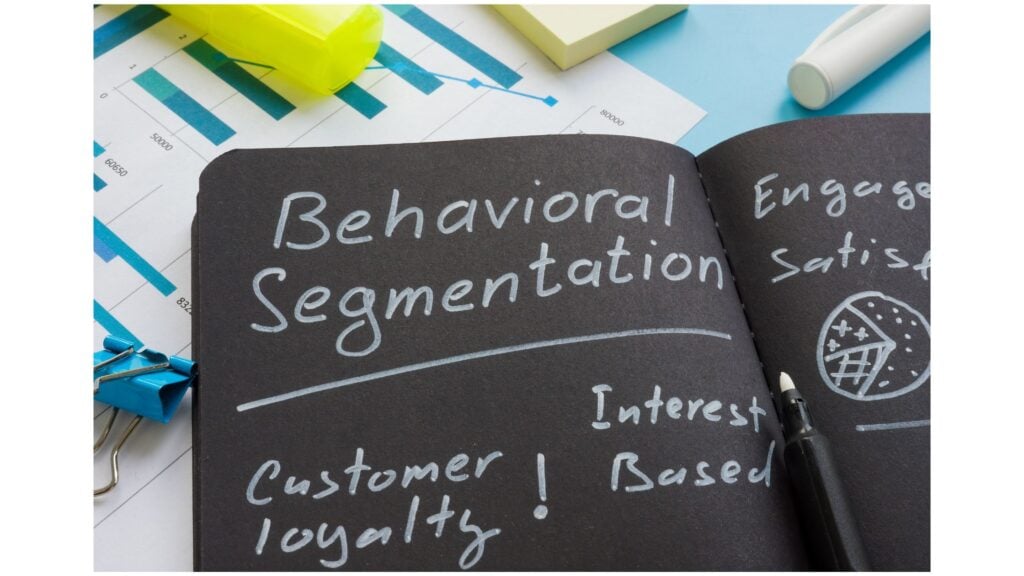Lifestyle Influence on Consumer Decisions: Understanding the Psychology Behind Purchases
The intersection of lifestyle and consumer behavior
Every purchase tell a story. From the morning coffee we choose to the streaming services we subscribe to, our lifestyle preferences mutely guide our consumer decisions. This relationship between how we live and what we buy forms the foundation of modern marketing strategies and consumer psychology.
Lifestyle influences extend far beyond simple demographic factors like age or income. They encompass our values, activities, interests, and opinions that jointly shape our identity and, accordingly, our purchase patterns.
Core lifestyle elements that drive consumer choices
Personal values and belief systems
Our core values act as internal compasses that guide consumer decisions, frequently subconsciously. A person who prioritize environmental sustainability might systematically choose eco-friendly products, regular at premium prices. This value base consumption reflect a deeper connection between personal ethics and purchase behavior.
Research show that 64 % of consumers world nowadays consider themselves belief drive buyers. This segment actively chooses, switches, avoid, or boycotts brands base on their stance on societal issues. For example, companies with strong environmental commitments oftentimes attract consumers whose lifestyles center around sustainability.
Social environment and cultural context
The people we surround ourselves with dramatically influence our consumption patterns. Our social circles create reference groups that establish consumption norms and expectations. A person whose friends prioritize fitness might be more likely to invest in premium athletic wear or gym memberships.
Cultural factors besides play a crucial role. Different cultures emphasize various aspects of consumption — some value luxury and status symbols, while others prioritize practicality and modesty. These cultural contexts become internalized as part of our lifestyle framework and afterward affect our purchasing decisions.

Source: consumerchoicecenter.org
Daily habits and routines
Our everyday routines create consistent consumer needs. A busy professional who commute everyday might develop consumption patterns around convenience foods, mobile entertainment, and time save services. These habitual purchases become thus integrated into our lifestyle that they oftentimes occur with minimal conscious decision-making.
The power of habit in consumer behavior can not be overstated. Studies indicate that roughly 45 % of our daily behaviors are habitual, perform most mechanically in familiar contexts. Marketers recognize this by position products to integrate seamlessly into exist routines instead than require significant lifestyle adjustments.
Lifestyle segmentation: how marketers leverage lifestyle patterns
Understand the lifestyle consumption connection has lead to sophisticated market segmentation approaches. Kinda than categorize consumers by demographic data entirely, marketers straightaway employ psychographic segmentation to group consumers base on lifestyle characteristics.
Val’s framework and lifestyle classification
The values and lifestyles (vveil) framework represent one of the virtually influential approaches to lifestyle segmentation. This system categorize consumers into eight distinct lifestyle groups base on their primary motivations and resources:
-
Innovators:
Successful, sophisticated consumers who embrace change and new technologies -
Thinkers:
Mature, reflective individuals who value knowledge and responsibility -
Achievers:
Career focus consumers with goal orient lifestyles -
Experiences:
Young, enthusiastic consumers who seek variety and excitement -
Believers:
Conservative, conventional people with strong principles -
Strikers:
Trend conscious consumers concern with social approval -
Makers:
Practical, self-sufficient individuals who value self-reliance -
Survivors:
Resource constrain consumers focus on meet basic needs
Each of these segments exhibit distinct consumption patterns that align with their lifestyle priorities. For instance, experiences might splurge on entertainment and fashion, while makers invest in tools and practical goods.
Digital lifestyle patterns
In the digital age, our online behaviors have created whole new lifestyle dimensions that influence consumer decisions. The emergence of digital natives versus digital immigrants represent different lifestyle approaches to technology adoption and usage.
Social media usage patterns have especially strong correlations with consumer behavior. Heavy Instagram users show different purchasing patterns compare to those who mainly use LinkedIn or TikTok. These platform preferences reflect lifestyle choices that extend to product selection and brand loyalty.
The evolution of lifestyle base consumer decisions
From conspicuous consumption to conscious consumption
Consumer behavior has evolved importantly from the era of conspicuous consumption describe by economistThorstein Veblenn. While status seek purchases remain relevant, many consumers straightaway embrace conscious consumption — a lifestyle orientation that emphasize mindful purchasing decisions.
This shift reflects broader lifestyle trends toward minimalism, sustainability, and purpose drive living. The rise of the sharing economy, secondhand markets, and subscription services all represent lifestyle adaptations that transform traditional consumption patterns.
Health and wellness lifestyle integration
May hap no lifestyle factor have more deeply influence consumer decisions in recent years than the emphasis on health and wellness. This shiftextendsd far beyond traditional health products to influence food choices, entertainment options, travel preferences, and eventide housing decisions.
The expand definition of wellness straightaway encompass physical, mental, social, and environmental dimensions — each create distinct consumer needs. From plant base diets to meditation apps, wellness orient lifestyles drive some of the fasting grow consumer categories.
Digital transformation of lifestyle base consumption
The role of social media in lifestyle aspiration
Social media platforms have become powerful lifestyle showcase that influence consumer aspirations. The cautiously curate lives display on Instagram, Pinterest, and other platforms create lifestyle templates that many consumers strive to emulate through their purchases.
Influencer marketing capitalizes on this dynamic by present products within aspirational lifestyle contexts. When an influencer incorporate a product into their apparent lifestyle, followers oftentimes perceive it as an authentic endorsement quite than traditional advertising.
Personalization and lifestyle alignment
Advanced data analytics nowadays enable unprecedented personalization in marketing. Brands can identify specific lifestyle patterns and tailor their message consequently. This capability has shift marketing from mass market approaches to microtarget campaigns that resonate with specific lifestyle segments.
The effectiveness of this personalization depend on accurately match product benefits to lifestyle priorities. For instance, the same vehicle might be market otherwise to urban professionals (emphasize parking ease and technology )versus suburban families ( (ghlight safety features and cargo space ).)

Source: lifestylic.com
Economic factors and lifestyle adjustments
Income elasticity and lifestyle adaptation
Economic circumstances importantly impact lifestyle possibilities and, accordingly, consumption patterns. Changes in income frequently trigger lifestyle adjustments that cascade through multiple purchase categories.
The concept of income elasticity explain why certain products are more sensitive to these lifestyle shifts than others. Luxury goods and experiential purchases typically show high income elasticity, while necessities demonstrate lower sensitivity to income changes.
Life stage transitions and consumption patterns
Major life transitions — such as begin college, start a career, marriage, parenthood, or retirement — create natural inflection points for lifestyle evolution. These transitions oftentimes trigger comprehensive reassessment of consumption priorities.
Marketers recognize these life stage transitions as critical opportunities to establish new brand relationships. Products that successfully integrate into these evolve lifestyles can secure long term consumer loyalty during these pivotal moments.
Psychological mechanisms behind lifestyle drive purchases
Identity expression through consumption
Many purchases serve as tangible expressions of our lifestyle identity. The products we choose to communicate our values, affiliations, and aspirations to others and reinforce our self concept.
This identity reinforce function explain why consumers oftentimes remain loyal to brands that align with their lifestyle self-image. When a brand becomes integrate into our lifestyle identity, switch to alternatives create psychological dissonance that consumers broadly prefer to avoid.
Lifestyle congruence and purchase satisfaction
Research systematically show that purchases align with our lifestyle values generate higher satisfaction than those that create lifestyle in congruence. Thisexplainsn why the same product might delight one consumer while disappoint another — the difference oftentimes lie in lifestyle fit quite than product quality.
This phenomenon highlight why lifestyle analysis provide more predictive power for consumer satisfaction than demographic factors unique. Understand how a product integrate into a consumer’s lifestyle ecosystem offer deeper insights than isolated product evaluations.
Practical applications for consumers and marketers
Consumer awareness of lifestyle influences
Become conscious of how lifestyle factors shape our purchasing decisions can lead to more intentional consumption. Many consumers today actively evaluate whether potential purchases sincerely align with their lifestyle priorities quite than respond to marketing pressure.
This self awareness help explain the growth interest in minimalism, essentialism, and other intentional live philosophies. These approaches emphasize conscious alignment between lifestyle values and consumption patterns.
Strategic implications for marketers
For marketers, the key insight is that successful products must seamlessly integrate into exist lifestyle patterns or offer compelling benefits that justify lifestyle adaptation. Products require significant lifestyle adjustments face inherently higher adoption barriers.
This reality explain why many innovative products fail despite technical superiority — they merely demand overly much lifestyle change without proportional benefits. Successful innovations typically offer substantial advantages that justify the lifestyle adjustments they require.
The future of lifestyle base consumer decisions
Emerging lifestyle trends and consumption implications
Several emerge lifestyle trends promise to reshape consumer behavior in significant ways:
-
Remote work normalization:
Create new consumption needs relate to home offices, digital connectivity, and work life integration -
Climate consciousness:
Accelerate demand for sustainable products and services across categories -
Digital wellness:
Drive interest in products that help manage technology’s role in daily life -
Multigenerational living:
Influence housing, furnishing, and household product decisions
These lifestyle shifts create both challenges and opportunities across almost every consumer category.
Technology integration and lifestyle monitoring
The proliferation of smart devices and wearable technology create unprecedented visibility into lifestyle patterns. From fitness trackers to smart home systems, these technologies generate detailed lifestyle data that influence purchase recommendations.
This technology integration enable progressively sophisticated lifestyle base marketing. Instead, than infer lifestyle patterns from purchase history, companies can nowadays forthwith observe relevant behaviors and tailor offerings consequently.
Conclusion: the inseparable connection
The relationship between lifestyle and consumer decisions represent one of the virtually fundamental dynamics in consumer behavior. Our purchasing choices both reflect and reinforce our lifestyle priorities in a continuous feedback loop.
Understand this connection offer valuable insights for both consumers and marketers. Consumers gain greater self awareness about their purchasing motivations, while marketers can develop more resonant products and message by align with authentic lifestyle patterns.
As consumer culture will continue to will evolve, the lifestyle lens will remain essential for will interpret and will predict will purchase behavior. The virtually successful brands will be those that will recognize lifestyle integration as the ultimate determinant of product adoption and loyalty.



